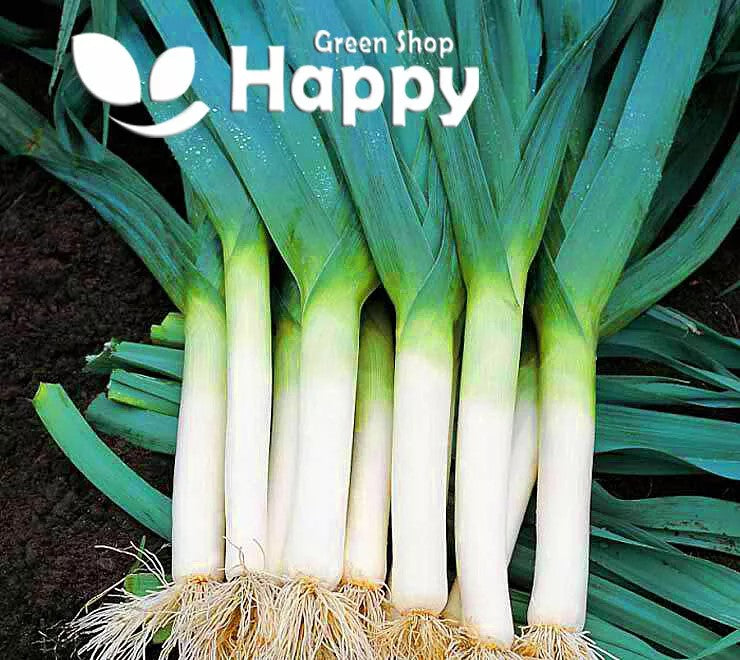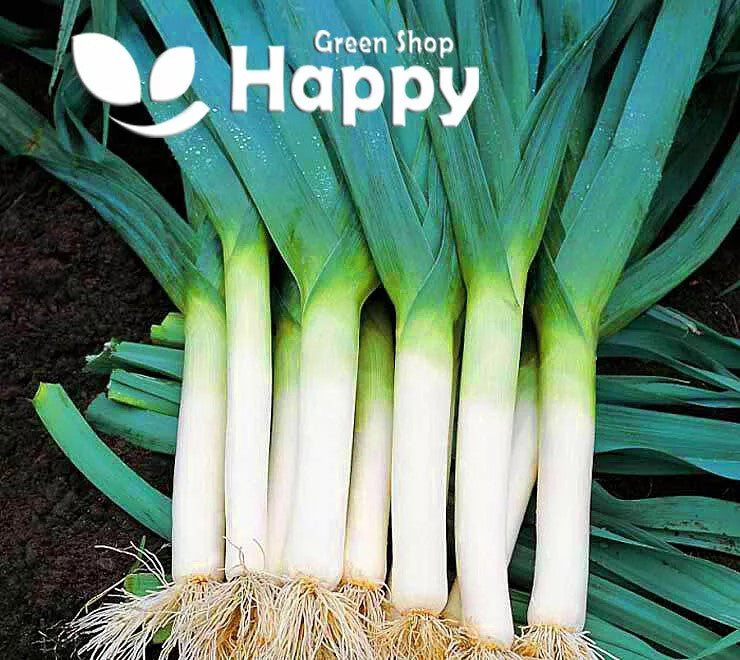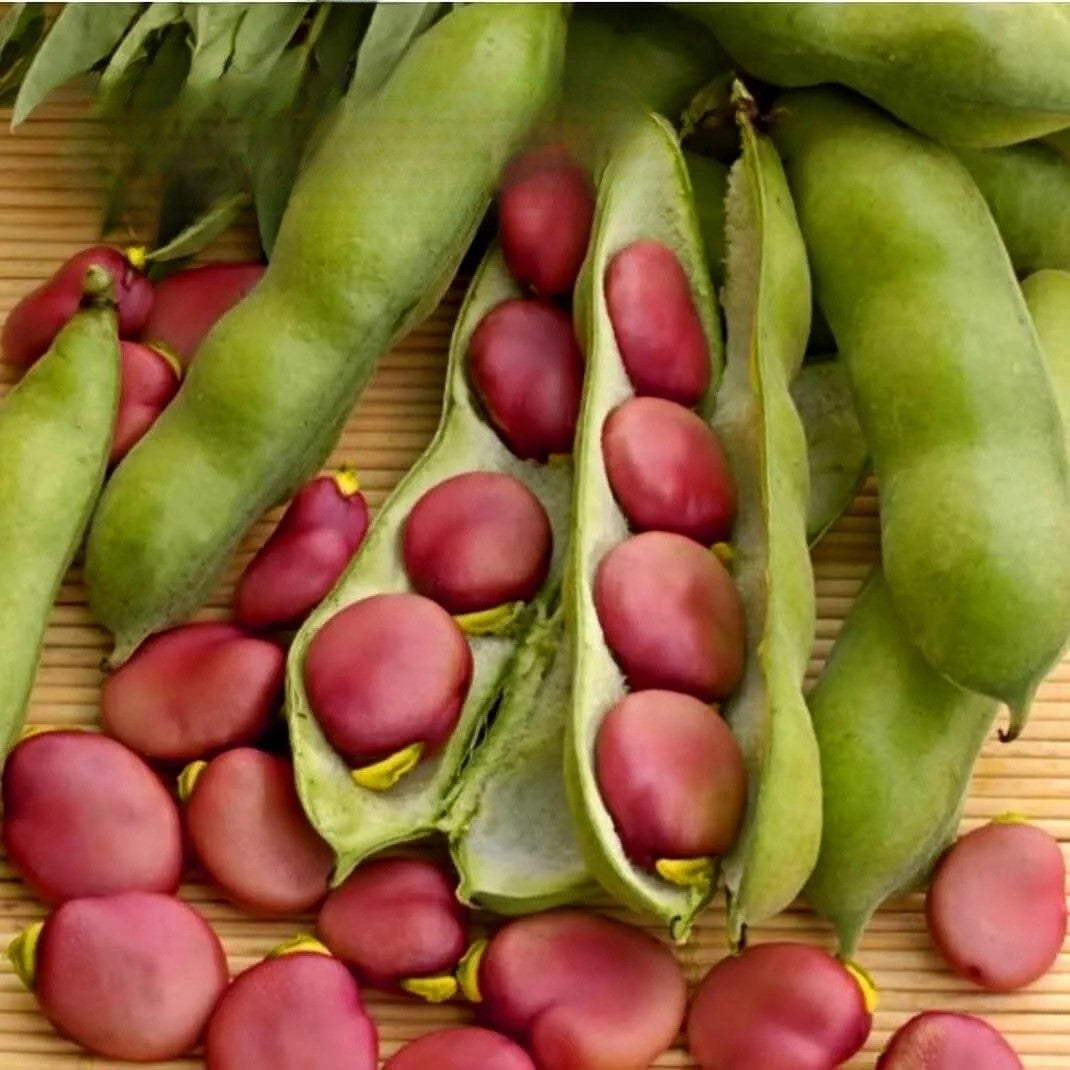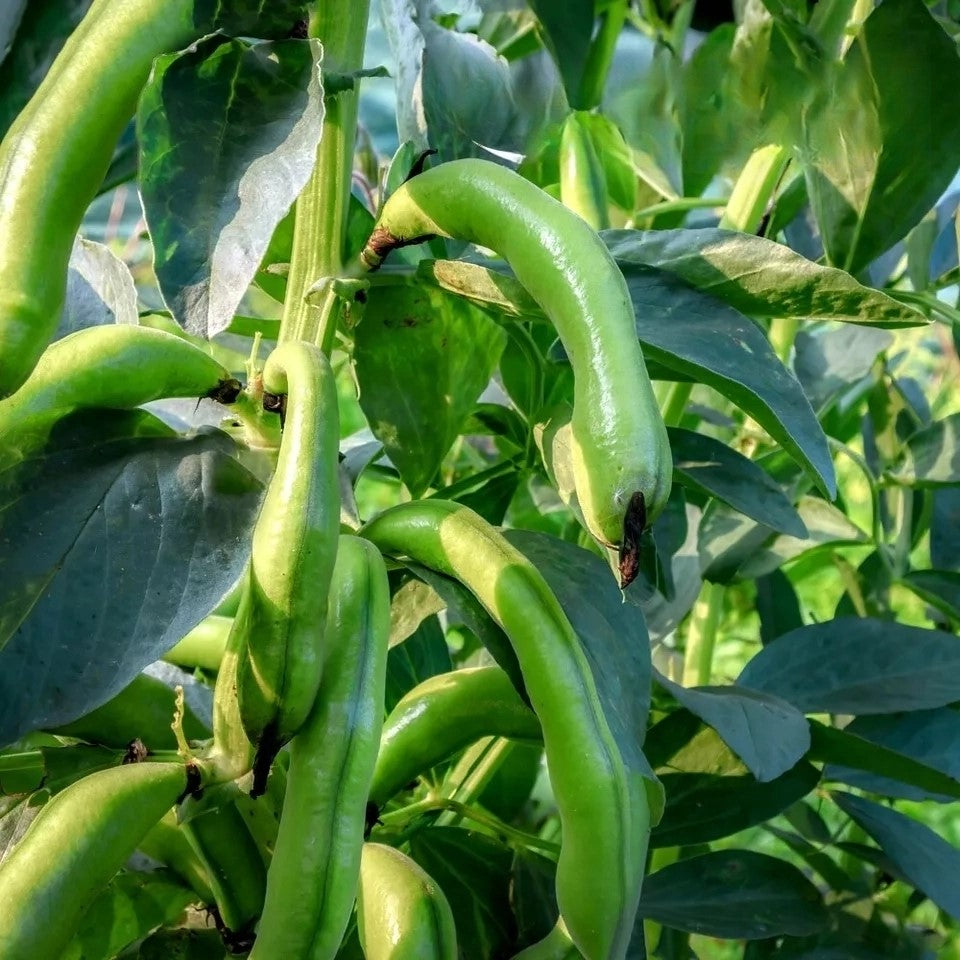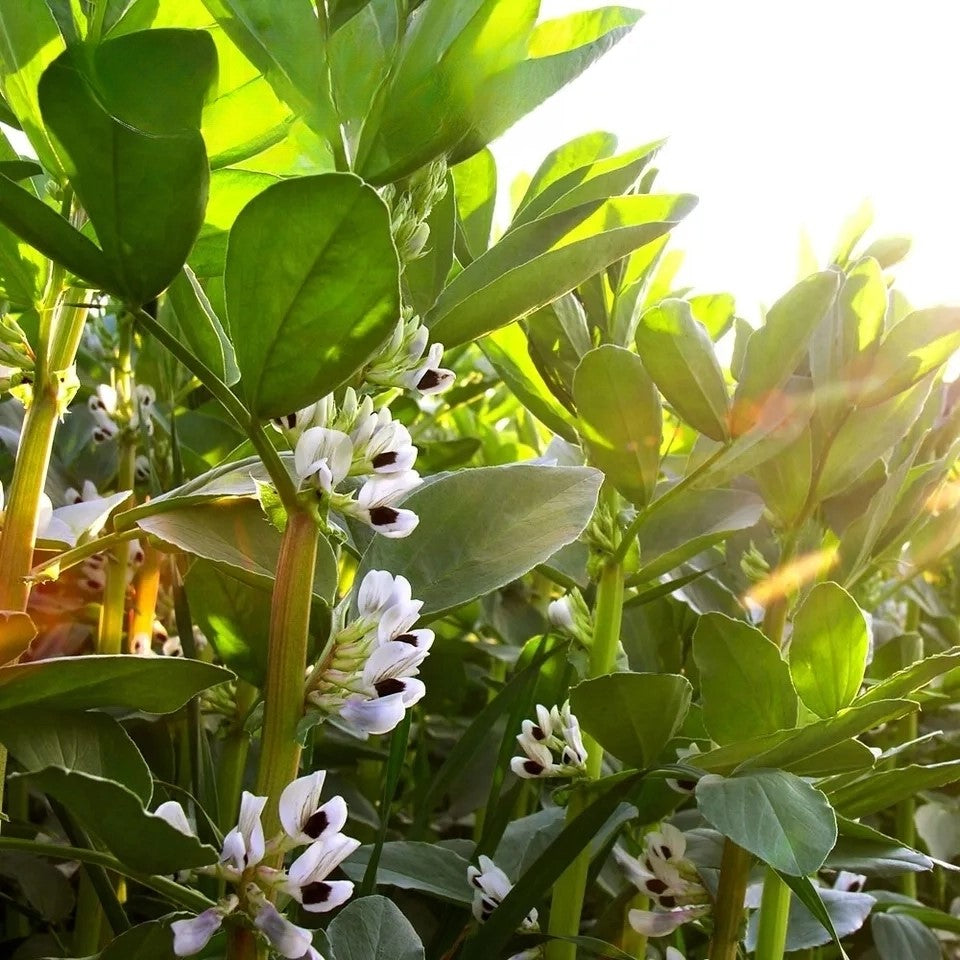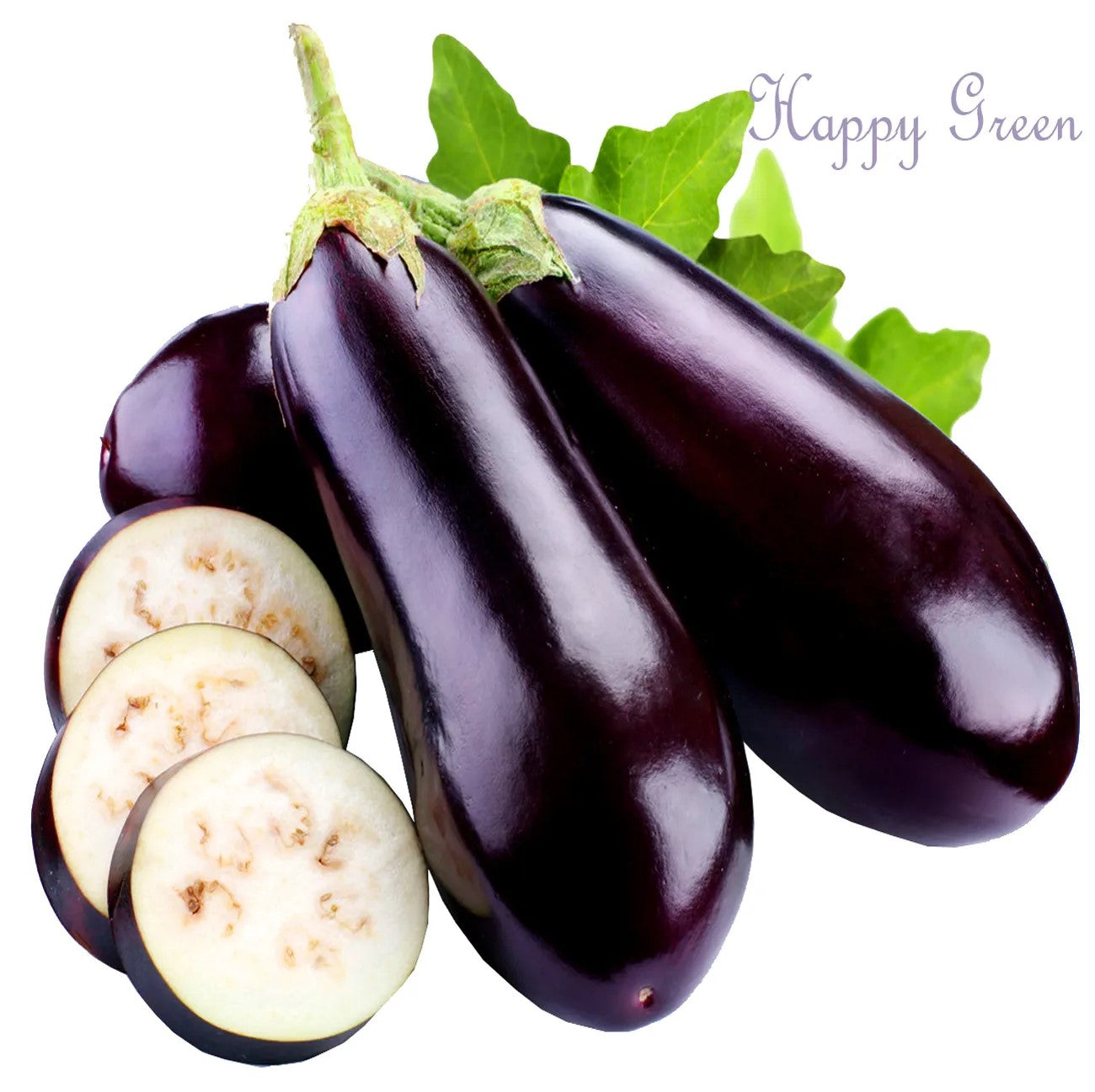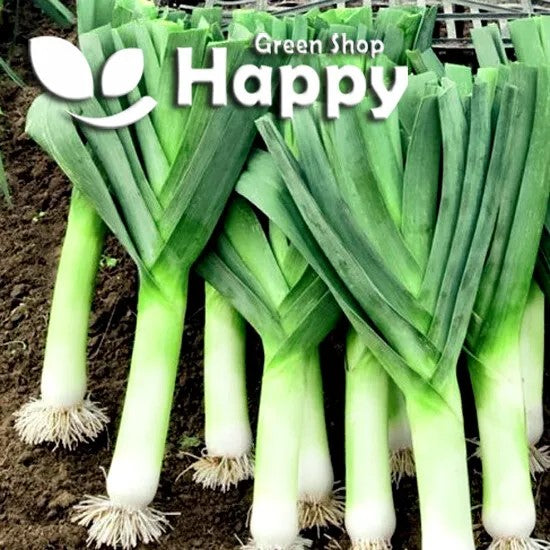Sort by:
97 products
97 products
Discover the uniqueness
Experience the delightful flavor and health benefits of Herbal Blends.
Leek 'Golem' Seeds (Allium porrum)
Grow strong, reliable crops with Leek 'Golem', a hardy variety that produces thick, white stems and dark green leaves. Known for its disease resistance and excellent cold tolerance, this leek performs well in both autumn and winter harvests. Its mild, sweet flavor makes it perfect for soups, stews, roasts, and hearty winter dishes. A dependable choice for home gardeners and allotments.
How to Grow
-
Sow indoors from January to March or outdoors from March to April.
-
Prefers fertile, well-drained soil in full sun.
-
Sow seeds 1–2 cm deep in trays or drills.
-
Transplant seedlings when pencil-thick, spacing 15 cm apart in rows 30–40 cm apart.
-
Earth up stems gradually to blanch for longer white shafts.
Key Features
-
Robust leek variety with thick, white stems
-
Excellent cold tolerance for winter cropping
-
Mild, sweet flavor perfect for cooking
-
Strong disease resistance for reliable harvests
-
Suitable for autumn and winter gardens
Ideal For
-
Autumn and winter harvesting
-
Soups, stews, roasting, and traditional leek dishes
-
Gardeners seeking hardy, disease-resistant crops
-
Kitchen gardens and allotments
Sowing
-
Best time: January–April
-
Depth: 1–2 cm
-
Spacing: 15 cm between plants, 30–40 cm between rows
-
Position: Full sun, fertile soil
-
Harvest: October to February
Quick Tip
-
Trim roots and tops before transplanting to help plants establish quickly and grow strong.
Broad Bean 'Karmazyn' – Seeds (Vicia faba)
Broad Bean 'Karmazyn' is a robust, high-yielding variety with large, tender seeds and vigorous, upright growth. Its delicious, creamy beans are perfect for fresh eating, steaming, or adding to soups, stews, and casseroles.
This variety is well-suited to cooler climates and early spring sowing, making it a reliable crop for home gardens and allotments. Its tall, sturdy plants also provide a natural support structure, reducing the need for staking.
How to Grow
-
Sow outdoors: February – April
-
Depth: 5–7 cm
-
Spacing: 20–30 cm apart in rows 50–60 cm apart
-
Position: Full sun, well-drained soil
-
Soil: Fertile, moderately rich, pH-neutral
-
Support: Optional staking for taller plants
Key Features
-
Large, tender seeds with excellent flavor
-
High-yielding and vigorous growth
-
Early-sown and hardy, suited for cooler climates
-
Ideal for fresh eating, steaming, or cooking in dishes
-
Minimal maintenance with natural upright support
Harvest
-
Harvesting period: May – July
-
Pick beans when pods are full but still tender for best taste.
Short Tip
Sow early for a spring harvest and protect young plants from frost if necessary.
Pink Thai Egg Tomato – Seeds
(Solanum lycopersicum)
Pink Thai Egg Tomato is a rare heirloom variety from Thailand known for its egg-shaped, rose-pink fruits and exceptional productivity. The smooth, glossy tomatoes grow in clusters and have a sweet, mild flavor with low acidity, making them perfect for fresh salads, salsas, and light cooking. Compact and hardy, this variety thrives in both warm and temperate climates.
Key Features
-
Fruit Shape: Small, egg-shaped
-
Color: Pink to rose-red
-
Flavor: Mild, sweet, and low-acid
-
Growth Habit: Indeterminate
-
Days to Maturity: 70–80 days
-
Yield: Heavy cropper with clusters of uniform fruits
Ideal For
-
Greenhouses, gardens, and containers
-
Fresh eating and gourmet dishes
-
Heirloom and specialty tomato collections
Sowing & Growing
-
Sow indoors: February – April
-
Transplant outdoors: After last frost
-
Harvest: July – October
-
Spacing: 45–60 cm apart
-
Position: Full sun, sheltered
-
Soil: Rich, well-drained compost
Care Tips
-
Support with stakes or cages for best yield.
-
Water regularly and feed with tomato fertilizer once flowering begins.
Carrot ‘Chantenay’ – Seeds
(Daucus carota)
Carrot ‘Chantenay’ is a classic, reliable variety producing short, broad, conical roots with a rich orange color and sweet, crisp flavor. Ideal for heavy or shallow soils, this variety performs well where longer carrots might struggle. Perfect for fresh eating, juicing, or roasting, ‘Chantenay’ carrots are a trusted favorite for gardeners and cooks alike.
Key Features
-
Type: Maincrop carrot
-
Root Shape: Short, conical
-
Color: Deep orange
-
Flavor: Sweet, tender, and full-bodied
-
Days to Maturity: 70–85 days
-
Soil Tolerance: Performs well in heavier or shallow soils
Ideal For
-
Kitchen gardens and allotments
-
Containers and raised beds
-
Fresh use, cooking, and juicing
Sowing & Growing
-
Sow outdoors: March – July
-
Harvest: June – October
-
Spacing: Thin to 5–8 cm apart
-
Depth: 1 cm
-
Position: Full sun
-
Soil: Loose, well-drained, stone-free
Care Tips
-
Keep soil moist for even germination.
-
Thin seedlings early to avoid crowding.
-
Avoid fresh manure to prevent root forking.
Leek ‘Blue de Solaise’ – Seeds
(Allium porrum)
Leek ‘Blue de Solaise’ is a traditional French heirloom variety celebrated for its exceptional winter hardiness and striking blue-green foliage that turns a beautiful deep violet-blue tint in cold weather. Producing thick, tender, and flavorful stems, this leek is perfect for soups, stews, and roasting. A reliable and decorative addition to the vegetable garden, it stands well in the ground through the winter months.
Key Features
-
Type: Heirloom winter leek variety
-
Plant Height: 40–50 cm
-
Stem: Thick, white, and tender
-
Foliage: Blue-green with violet tones in frost
-
Flavor: Mild, sweet, and rich
-
Days to Maturity: 110–130 days
-
Hardiness: Excellent frost resistance
-
Harvest Period: Late autumn to early spring
Ideal For
-
Winter and early spring harvests
-
Cold climates and overwintering
-
Home gardens and traditional kitchen gardens
Sowing & Growing
-
Sow indoors: February – April
-
Transplant outdoors: May – June
-
Harvest: November – March
-
Spacing: 15 × 30 cm
-
Position: Full sun
-
Soil: Deep, fertile, well-drained soil
Care Tips
-
Hill up soil around stems to encourage long white shanks.
-
Apply mulch to retain moisture and protect roots in winter.
-
Ideal for succession sowing to extend harvest.
Pointed Red Cabbage ‘Kalibos’ – Seeds
(Brassica oleracea L.)
Pointed Red Cabbage ‘Kalibos’ is an exceptional variety combining the sweet flavor of pointed cabbage with the deep red color of traditional red cabbage. The tight, conical heads are medium-sized, firm, and full of crisp, tender leaves with a mild, slightly sweet taste—perfect for salads, coleslaws, and light cooking.
Key Features
-
Type: Red pointed cabbage
-
Head Shape: Conical, medium-sized, dense
-
Color: Deep purple-red
-
Taste: Sweet, mild, and crisp
-
Days to Maturity: 110–120 days
-
Harvest Period: Late summer to autumn
-
Storage: Good short-term storage variety
Ideal For
-
Home gardens and allotments
-
Fresh salads and coleslaws
-
Cooking, fermenting, and pickling
Sowing & Growing
-
Sow indoors: February – April
-
Transplant outdoors: April – May
-
Harvest: August – October
-
Spacing: 40 × 50 cm
-
Position: Sunny, sheltered spot
-
Soil: Fertile, moist, well-drained soil enriched with compost
Care Tips
-
Keep soil consistently moist for tender heads.
-
Apply organic fertilizer or compost during growth.
-
Protect from cabbage butterflies with netting.
Aubergine 'Black Beauty' – Seeds (Solanum melongena)
The classic Black Beauty aubergine is a time-honored variety producing large, glossy, deep-purple fruits with tender flesh and rich flavor. Compact and reliable, it’s a favorite for home gardeners and a staple in Mediterranean cuisine. Perfect for grilling, roasting, baking, or adding to curries and stews, this aubergine is as versatile as it is delicious.
How to Grow
-
Sow seeds indoors from January to April in trays or pots.
-
Sow 0.5 cm deep in moist compost, keeping warm at 20–25°C.
-
Transplant seedlings into larger pots when big enough to handle.
-
Harden off and plant out in a greenhouse or sunny, sheltered spot once frosts have passed.
-
Support plants as they grow and keep soil moist.
Key Features
-
Classic heirloom aubergine variety
-
Large, glossy, deep-purple fruits
-
Rich, tender flesh with excellent flavor
-
Reliable and high-yielding
-
Suitable for greenhouses, polytunnels, or warm outdoor sites
Ideal For
-
Mediterranean cooking
-
Roasting, grilling, frying, and stews
-
Greenhouses, polytunnels, or sunny patios
-
Home gardeners seeking a proven classic
Sowing & Harvest
-
Sow: January to April (indoors)
-
Depth: 0.5 cm
-
Transplant spacing: 40–50 cm
-
Harvest: August to October
Quick Tip
-
Pinch out the growing tip when the plant reaches about 30 cm to encourage bushier growth and more fruit.
Winter Leek 'Tango' – Seeds (Allium porrum)
Winter Leek 'Tango' is a robust, frost-hardy variety producing long, thick stems with tender white and light green parts. Its mild, sweet flavor makes it ideal for soups, stews, gratins, and braised dishes throughout the winter months.
This reliable variety is perfect for home gardens, raised beds, and allotments, offering excellent yields even in cold weather.
How to Grow
-
Sow indoors: February – March
-
Transplant outdoors: May – June
-
Depth: 1–2 cm
-
Spacing: 15–20 cm between plants, rows 30–40 cm apart
-
Position: Full sun to partial shade
-
Soil: Deep, fertile, well-drained, enriched with compost
-
Watering: Keep soil moist, especially during establishment
Key Features
-
Hardy winter leek with long, tender stems
-
Mild, sweet flavor suitable for winter cooking
-
Ideal for soups, stews, gratins, and braised dishes
-
Frost-tolerant and high-yielding
-
Suitable for home gardens, raised beds, and allotments
Harvest
-
Harvesting period: November – March
-
Can be left in the ground during winter with light mulching; pull when stems are thick and firm.
Short Tip
Mound soil around stems in late summer to blanch and achieve longer white stems.
Winter Leek ‘Elephant’ – 400 Seeds
(Allium porrum) – Giant Winter Leek
The Winter Leek ‘Elephant’ is a traditional variety producing thick, tall stems with excellent cold tolerance, making it perfect for harvesting right through the winter months. With its mild, sweet onion-like flavor and robust size, it is a reliable crop for the kitchen garden. Ideal for soups, stews, roasting, and classic leek dishes.
Key Features
-
Type: Winter-hardy leek
-
Stems: Thick, long, and upright
-
Flavor: Mild, sweet, and tender
-
Harvest period: November to March
-
Position: Full sun or partial shade
-
Soil: Fertile, well-drained, moisture-retentive
Ideal For
-
Winter harvesting and extended cropping
-
Soups, stews, casseroles, and roasting
-
Kitchen gardens, allotments, and small farms
-
Cold-climate vegetable production
Sowing & Growing
-
Sow indoors: January–March in modules or seed trays.
-
Sow outdoors: March–April in a prepared seedbed.
-
Transplant: May–June, spacing 15 cm apart in rows 30–40 cm apart.
-
Harvest: From late autumn through to early spring.
Care Tips
-
Earth up around stems to blanch them and keep them tender.
-
Keep soil moist during dry spells.
-
Rotate crops yearly to avoid onion pests and diseases.
Showing 9/97

